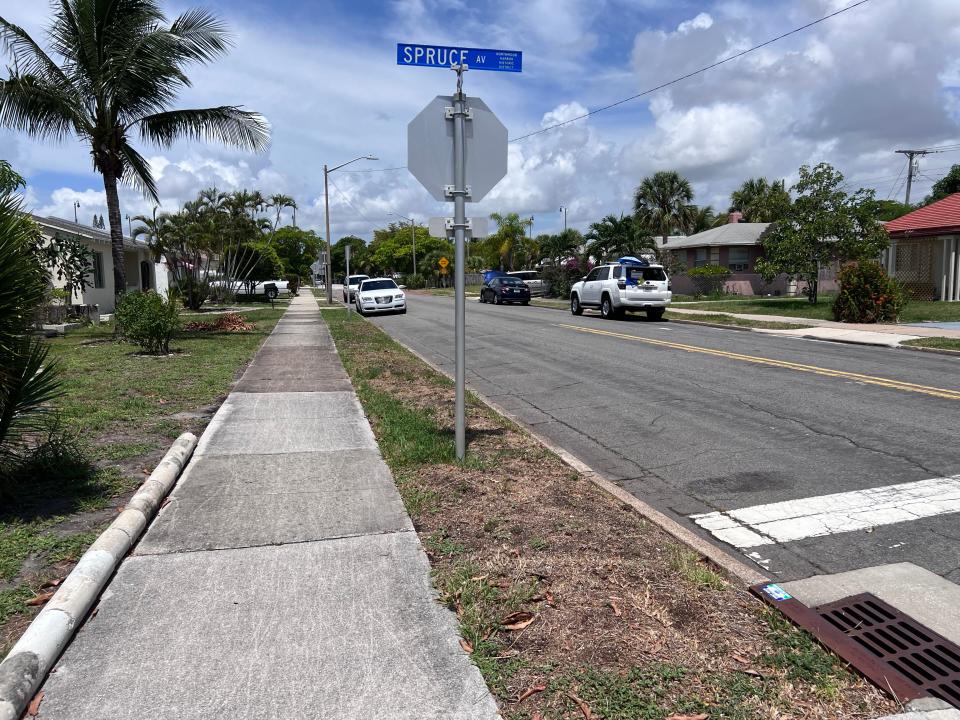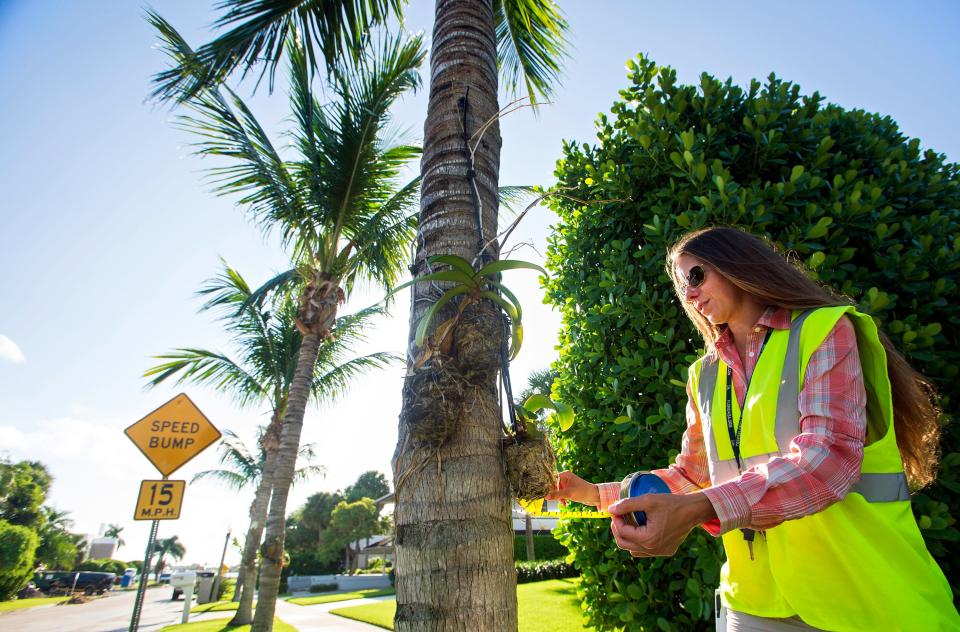More trees, not cooling centers, are south Florida's answer to increasingly hot summers

Late July blistered with sandy skies and soupy air in south Florida as a slug of Saharan dust drained clouds of rain while moisture clung to the surface like hot gum on a shoe.
The combination of a dry middle atmosphere blocking showers and moisture near the ground drove the heat index, or "feels-like" temperature, into the triple digits from the East Coast to the Gulf of Mexico.
On 58th Street in West Palm Beach – a block of asphalt barren of shade trees – it reached 93.9 degrees near noon July 22 with a relative humidity of 58%. That means it felt like 108 degrees.
“My electric bill was almost two-fold in June from what it was in March,” said 27-year-old Varun Parshad, who sought shade with his dog Nala at Osprey Park, eight blocks south of 58th Street. “I try to be more disciplined with the temperature settings.”
But the Baltimore native likes to sleep with the thermostat on 69 degrees, which means his $40 bill in March was more than $80 in June.
Sweat-soaked future: 126 days with temps that feel like 105 degrees? Florida heading that way
Do this: Here are 9 climate change solutions you, as a Florida resident, can do today
Climate change canyons: Historic neighborhoods' dilemma: Elevate, sell or live in a climate change-created canyon
Six miles to the southwest, the National Weather Service’s official gauge at Palm Beach International Airport registered 88 degrees at noon with a feels-like temperature of 100 degrees.

The difference between 58th Street and the airport is significant enough when meteorologists and emergency officials have to make heat-related decisions.
Robert Molleda, warning coordination meteorologist at the NWS office in Miami, said forecasters also consider temperature readings from outside sources such as the South Florida Water Management District and the Florida Automated Weather Network when deciding to issue a heat advisory, watch or warning.
Still, officials recognize that temperatures fluctuate by neighborhood, and it’s something some cities are trying to mitigate as they plan for a warmer future stoked by climate change.
A 2019 urban heat island study done in conjunction with the National Oceanic and Atmospheric Administration boiled over with feels-like temperatures in the areas around 58th Street in West Palm Beach’s Northwood Harbor Historic District.
City officials are dedicating $7,700 to plant 14 green buttonwood trees on 57th and 58th streets to throw some shade on the sunbaked blacktop. The money comes from a “tree mitigation” fund that developers pay into if they can’t meet city requirements for trees on their properties. As of late July, there was $582,000 in the account.

Unlike northern cities where cooling centers are set up to give people without access to air conditioning a break from the heat, it is exceedingly rare to find a home in south Florida without central air conditioning or at least a couple of humming window units.
Palm Beach County’s emergency operations center is well-equipped to handle a hurricane, but there is no history of a cooling center ever opening.
“Our homes are typically set up with air conditioning because you can’t not have it,” said Penni Redford, West Palm Beach's resilience and climate change manager. “But then the question becomes, can you afford it?”
Soggy puzzle: Climate change has scientists trying to solve South Florida’s rainfall mystery
This is what's coming: How climate change will affect Palm Beach County
Florida climate change: Hot future: More traffic and pythons, fewer days at Disney
She points to public libraries as a place people could go to cool off for now. But a cooling center in the future isn't out of the question.
“Nobody knows for sure how hot it's going to get and how soon that's going to be,” Redford said.
Palm Beach County's average daily temperature has increased nearly 4 degrees since 1900, from 73 degrees to 2020's average of 76.9, according to the National Centers for Environmental Information.
More striking was the jump in overnight lows, which got warmer by 4.6 degrees, from 63.3 in 1900 to 67.9 degrees in 2020.
By 2090, temperatures in most of Florida are likely to rise above 95 degrees between 45 and 90 days per year, compared with fewer than 15 days in 2015, according to the Environmental Protection Agency.
So, trees are, for now, what West Palm Beach has focused on as a way to cool neighborhoods and encourage more walking and biking to meet the city’s goal of reaching net-zero greenhouse gas emissions by 2050.
Counting trees: West Palm's tree survey: It's time to start planting more shade trees to combat climate change
'Happy coral': How 'happy coral' is thriving in a trashy, polluted port thrashed by cruise ships
Beware the king tides: The tide is getting higher, and higher, and higher
It promised in 2015 to plant and give away 10,000 trees in 10 years. The tally by the end of 2022 is expected to be about 7,000.
Florida’s iconic palm tree, however, isn’t even an option at the tree giveaways because they offer little shade to baking urban heat islands and capture minimal amounts of carbon – a greenhouse gas contributing to global warming.
As city officials look for more ways to cool concrete jungles and balance carbon emissions, the priority for new plantings is often broadleaf hardwood trees, not the idyllic palm. The 2019 NOAA study conducted in West Palm Beach found a heat-index temperature of 122 degrees near downtown, compared to 92 degrees taken during the same time period near the wetlands area of Grassy Waters Preserve.
Amid the pervasive whirring of air conditioners along 57th street on July 22, a woman’s voice could be heard coming from inside a bottom-floor apartment in a converted 1940s-era home.
Toni Harrison, 56, had her windows open despite the stifling heat. It’s not the cost that prevents her from turning her window units on, although she acknowledges it does save money.
“I just like the natural air,” Harrison said. “I have my fans and I get a breeze. I do get hot, but I refuse to turn the air on.”
This is Harrison's first summer in south Florida and the hottest part of the year is still to come. Early August brings normal daily highs of 91 degrees, at the airport.
This article originally appeared on Palm Beach Post: Palm Beach County weather: Plant trees to combat heat island effect

